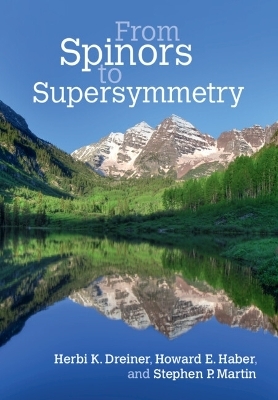
From Spinors to Supersymmetry
Cambridge University Press (Verlag)
978-0-521-80088-4 (ISBN)
Supersymmetry is an extension of the successful Standard Model of particle physics; it relies on the principle that fermions and bosons are related by a symmetry, leading to an elegant predictive structure for quantum field theory. This textbook provides a comprehensive and pedagogical introduction to supersymmetry and spinor techniques in quantum field theory. By utilising the two-component spinor formalism for fermions, the authors provide many examples of practical calculations relevant for collider physics signatures, anomalies, and radiative corrections. They present in detail the component field and superspace formulations of supersymmetry and explore related concepts, including the theory of extended Higgs sectors, models of grand unification, and the origin of neutrino masses. Numerous exercises are provided at the end of each chapter. Aimed at graduate students and researchers, this volume provides a clear and unified treatment of theoretical concepts that are at the frontiers of high energy particle physics.
Herbi K. Dreiner is Professor of Physics at the University of Bonn. He received his PhD from the University of Wisconsin, and also worked at the Deutsches Elektronen-Synchrotron (DESY), the University of Oxford, ETH Zürich and the Rutherford Appleton Laboratory. He is the author of over 100 scientific papers on supersymmetry and has received several teaching prizes. He is a founder of the Bonn Physics Show for which he received the European Physical Society High Energy Physics (EPS-HEP) Outreach Prize. Howard E. Haber is a Distinguished Professor of Physics at the University of California, Santa Cruz. He received his Ph.D. from the University of Michigan and is a Fellow of the American Physical Society. He is a co-author of The Higgs Hunter's Guide, published by Perseus Books in 1990. He won an Alexander von Humboldt Research Award in 2009 and was a co-recipient of the 2017 American Physical Society J. J. Sakurai Prize for Theoretical Particle Physics. Stephen P. Martin is a Professor of Physics at Northern Illinois University, where he received the university's highest award for teaching excellence. He gained his Ph.D. from the University of California at Santa Barbara and is a Fellow of the American Physical Society. He has authored over 100 papers in high-energy physics.
Preface; Acknowledgements; Acronyms and abbreviations; Part I. Spin-1/2 Fermions in Quantum Field Theory, the Standard Model, and Beyond: 1. Two-component formalism for spin-1/2 fermions; 2. Feynman rules for spin-1/2 fermions; 3. From two-component to four-component spinors; 4. Gauge theories and the standard model; 5. Anomalies; 6. Extending the standard model; Part II. Constructing Supersymmetric Theories: 7. Introduction to supersymmetry; 8. Supersymmetric Lagrangians; 9. The supersymmetric algebra; 10. Superfields; 11. Radiative corrections in supersymmetry; 12. Spontaneous supersymmetry breaking; Part III. Realistic Supersymmetric Models: 13. The Minimal Supersymmetric Standard Model; 14. Realizations of supersymmetry breaking; 15. Supersymmetric phenomenology; 16. Beyond the MSSM; Part IV. Sample Calculations in the Standard Model and Its Supersymmetric Extension: 17. Practical calculations involving two-component fermions; 18. Tree-level supersymmetric processes; 19. One-loop calculations; Part V. The Appendices: Appendix A. Notations and conventions; Appendix B. Compendium of sigma matrix and Fierz identities; Appendix C. Behavior of fermion bilinears under C, P, T; Appendix D. Kinematics and phase space; Appendix E. The spin-1/2 and spin-1 wave functions; Appendix F. The spinor helicity method; Appendix G. Matrix decompositions for fermion mass diagonalization; Appendix H. Lie group and algebra techniques for gauge theories; Appendix I. Interaction vertices of the SM and its seesaw extension; Appendix J. MSSM and RPV fermion interaction vertices; Appendix K. Integrals arising in one-loop calculations; Bibliography; References; Index.
| Erscheint lt. Verlag | 30.6.2023 |
|---|---|
| Zusatzinfo | Worked examples or Exercises |
| Verlagsort | Cambridge |
| Sprache | englisch |
| Maße | 178 x 254 mm |
| Gewicht | 2254 g |
| Themenwelt | Naturwissenschaften ► Physik / Astronomie ► Atom- / Kern- / Molekularphysik |
| ISBN-10 | 0-521-80088-9 / 0521800889 |
| ISBN-13 | 978-0-521-80088-4 / 9780521800884 |
| Zustand | Neuware |
| Haben Sie eine Frage zum Produkt? |
aus dem Bereich


